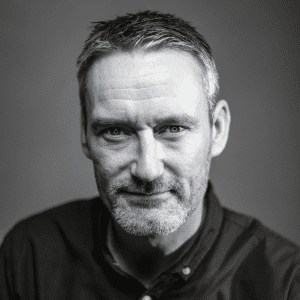BLOG
Examples of Brand Purpose in Action: When It’s Needed Most
How companies like Grab, Airbnb, Super Monkey and Glossier are turning purpose into brand success.
Crisis like COVID-19 is a touchstone for companies. Customers and employees are looking to their favorite brands to help solve problems, creating an enormous opportunity for companies who are purpose-driven.
But while purpose is essential for any brand today, just having one is not enough: Brands are on trial. Stakeholders are calling brands out on hypocrisy, mixed messages and failed initiatives. Even companies that thought they had a clear purpose need to prove they are investing in substantial change and not just “woke washing.”
“Customers and employees are looking to their favorite brands to help solve problems.”
Defining and living your organization’s purpose is hard. It’s messy. And it’s never-ending. But the most successful companies in these trying times will derive their purpose from shared human values, stay true to what they do and relevant to what their stakeholders need. And they’ll act on it every day.
These four companies are using purpose in powerful ways, and working hard to live it in challenging times:
Grab: Empowering communities with technology
Grab’s purpose started with a question – how can we empower individuals and better people’s lives and local communities through technology? This aspiration became more important than ever as the economic impact of the pandemic shook its employees, customers and neighborhoods.
Facing the crisis, Grab stepped up. On top of financial contributions to various COVID-19 community funds and meal schemes, Grab introduced over 100 initiatives that leverage its technology, ride-hailing and food delivery networks to support and safeguard its users, partners, communities and frontliners. For example, GrabCare is an around-the-clock, on-demand service enabling healthcare professionals to travel to and from medical facilities seamlessly.
Committed to empowering local communities, Grab accelerated its merchant-partner onboarding processes to help over 78 thousand small traditional businesses go online. The company also encouraged the community to help each other. Through its new “Meal for your driver” feature, Grab users purchased more than 700 thousand meals for its delivery partners and drivers. “Only when we come together and support one another, can we then overcome this challenging time together,” said Yee Wee Tang, Managing Director of Grab Singapore.
Airbnb: Deepening authenticity
When a company’s purpose ties directly to what it does, brands feel more authentic. This becomes even more important during times of change. Airbnb exists to “create a world where you can belong anywhere.” With sweeping travel restrictions and lockdowns, the company had to pivot quickly to find new ways to express hospitality. Open Homes for COVID-19 frontline workers gave hosts an immediate way to help. And it began creating online experiences that allow guests to learn new activities and meet people from around the world. By enabling people to connect, even while stuck at home, Airbnb is finding new ways to stay relevant.
Glossier: Listening builds a shared community
Shared purposes are not just relevant to one audience, they are felt deeply by each–employees, customers and communities. That calls for genuine listening to make sure that actions, products and services align with the values and beliefs of those stakeholders. Glossier’s purpose is “to give voice through beauty” by “leveraging the power of the personal narrative.” Throughout the COVID-19 crisis, Glossier’s most frequent request was for a product to help with increased irritated skin from repeated handwashing. Inspired by stories and comments, Glossier quickly developed a hand cream, donating thousands of units to first responders.
The company is also recognizing that obsession with that external community has a downside, leading it to prioritize the needs of customers over that of its own workers, especially people of color. When shoppers engage in racist behavior, for example, the company’s “the customer is always right” stance gets toxic. Glossier isn’t running away from that dissonance but trying to learn. The lesson? Make sure your purpose is grounded in shared human values–including employees–and take responsibility when things go wrong.
Super Monkey: Energizing your life with fitness
The final dimension emerges when companies demonstrate that purpose is not just an empty promise. If companies can’t deliver, it doesn’t matter how inspiring or authentic they are.
Chinese fitness chain Super Monkey is known for its exceptional community-based experiences as well as a near-perfect retention rate of coaches. The company became an industry disruptor with its innovative business models known as “Urban Spot in Motion” and drop-in classes that can be booked directly via WeChat. All of its initiatives are rooted in Super Monkey’s brand purpose of “integrating sports into life,” or making fitness accessible for everyone.
COVID-19 has put Super Monkey’s purpose to the test. The company first offered a 10,000 yuan interest-free loan to every coach, in order to protect the normalcy of their life. Two days later, Super Monkey quickly launched free live-streamed fitness classes, dubbed “Super Monkey At-Home Squats,” in an effort to deepen connection with members and encourage them to stay active. More than 170,000 people joined its first session. To go a step further, Super Monkey continued to create more innovative fitness routines so that members could encourage their family members, no matter old or young, to exercise together – integrating sports into everyone’s life.
Despite the crisis, Super Monkey has reinforced its brand purpose with action, outshining the competition. During its recent Singles’ Day sales event, Super Monkey sold store credits worth over 100 million yuan in 24 hours, a testament that Super Monkey is becoming a synonym for a fit and energetic lifestyle in China.
FINAL THOUGHTS
Just as people look to friends, family, and government during hard times, they are holding a magnifying glass up to businesses. Customers expect companies to treat people well, engage the community and evolve to meet a changing world. Workers are questioning employee value propositions. They want businesses to put people over profit. Words and actions matter.
Companies need to ask hard questions and revisit them often. Does your purpose…
- Make the world better? Even companies with a pragmatic purpose can inspire others.
- Create believers? When businesses connect purpose to the way they earn money, it’s authentic and makes perfect sense.
- Apply to all audiences? The right purpose resonates with employees, customers, communities and investors.
- Translate into action? If an organization can’t deliver on promises, everything else is pointless. Enabled by leaders, companies constantly need to bring their purpose to life.
At Prophet, we help brands unlock growth– beginning with the “DNA” and purpose of their businesses. Let’s connect to learn more about how we can strengthen yours.


































